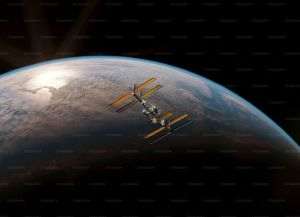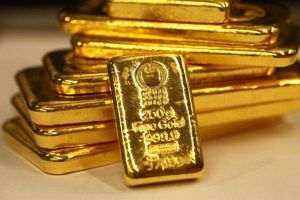Albania represents one of the new tourist destinations for Romanians, especially since the WizzAir company made available the direct route Otopeni-Tirana. The former communist country, where Enver Hoxha's regime was much harsher than the one in Romania (in Albania the communists destroyed all the churches and mosques, the only place of worship not demolished being the one located in Skenderbeg square in the center of Tirana, a mosque dating from the century XVth), is in full development, both from the point of view of the road infrastructure and from the point of view of the tourist infrastructure, all the projects started having a single goal: highlighting the main tourist objectives and facilitating the access of tourists to these.
The capital Tirana is at the center of this development process, and the new buildings seek to create an architectural ensemble that combines Albanian tradition with modernity. From the National Arena complex, where the Albanian national team plays its home football matches, to the residential complexes under construction on the outskirts of the city, Tirana presents itself to tourists as a colourful, vibrant city with something for everyone to offer.
Near the National Arena, the first university in Albania is located, and the boulevard starting from its right is the backbone of the city. In the immediate vicinity is the so-called Pyramid of Tirana, which was originally a mausoleum erected during the communist regime to honor the memory of Enver Hoxha, according to information provided by our guide Chris Dotbiba.
Chris Dotbiba stated: "After the death of the dictator Enver Hoxha, the members of the Communist Party decided to build this mausoleum to honor the former secretary general. But what you see now is not the original construction, but a modernization, a renovation of the pyramid. At first there were no actual stairs, but only slopes on which the children ran very quickly to the top of the pyramid, after which they descended just as quickly. There was a whole debate about this construction, whether it should be demolished or not, but it was preserved, renovated and the whole area was reorganized with terraces, restaurants, and concerts of well-known Albanian bands take place in that place".
The area near the pyramid, towards the Toptani mall, is a pedestrian area, with restaurants and terraces, where tourists can stop to cool off on hot summer days, but also to serve different traditional dishes. In this pedestrian zone, there are several shops with traditional products, which with their variety of bright colors encourage you to choose a souvenir to take home or to give as a gift to a family member or a dear friend. Also in this area, across the road from the Toptani Mall is the Tirana Citadel, which was built over a former Byzantine construction dating back to the year 1300. Officially known as Justinian's Citadel, it has always played an important role at the crossroads of trade routes that met in Tirana. Today, only the remains of the defensive walls remain, and the premises have been transformed into a modern version of the traditional bazaar, with numerous restaurants serving local and international cuisine, as well as souvenir shops.
The core of Tirana, however, is Skanderbeg Square (Skanderbeg), around which there are several government buildings, but also emblematic buildings such as the National History Museum, the Opera House, the Et'hem Bey Mosque, the Clock Tower, and the Orthodox Cathedral. In the same area, towards the Toptani mall is the new market - Pazari I Ri, which was built on the site of the former Tirana bazaar and where, in addition to the vegetables and fruits usually found in the market, merchants also sell traditional items and various antiques for tourists. Around the square there are several restaurants where different traditional dishes can be served.
However, Tirana is still marked by communist history, which the people of this country do not want to repeat. And so that the horrors of communism are not forgotten in the city center, two locations Bunk'Art 1 and Bunk'Art 2 were set up, both located inside underground anti-atomic bunkers, built during the time of the dictator Enver Hoxha.
It seems that the former dictator had a real psychosis during the Cold War and, for fear of being attacked on the one hand by the Americans with the Western bloc and on the other by the Soviets, he built in just 8 years over 173,000 fallout bunkers and trained the population to handle such an eventual attack. The plan was to build over 221,000 bunkers, one for every 11 inhabitants.
Bunk'Art 1 was designed as a shelter for Enver Hoxha himself and his most important allies. It has 5 levels and over a hundred rooms, some of which have been preserved in their original form, such as Hoxha's room and office. Unfortunately, I did not visit this location, but I was in Bunk'Art 2 which is located right in the center of Tirana, near Skanderbeg Square, and which reproduces the history of the establishment of the Ministry of Interior of Albania, but also of the former Security (Sigurimi) of the country respectively, with the related details about its activity, including how to draw up the files of those targeted by the repression body of the former communist state.
• The fortress of Skanderbeg, the hero of Albania
Our journey through Albania continued in the town of Kruje, which dates back to the Middle Ages and is located on a rocky slope. Kruje is one of the most historically important localities in the country. Thus, around the Roman era, the area prospered under the rule of the so-called Albani. Later, in the Middle Ages, Kruje became the first capital of the Albanian state. The city gained real importance in the 15th century, when it was the center of the Albanian resistance (led by the national hero Skanderbeg) during the Ottoman invasion. Incidentally, the former fortress of Skanderbeg, transformed into a museum, dominates the entire area and to reach it you must first pass through the old Ottoman bazaar where craftsmen sell various traditional items such as woven carpets, woolen boots, instruments musicals, the traditional Albanian kushma - qeleshe, which men wear, various statuettes of Skanderbeg and many flags of their country. Finally, after passing the gate of the fortress, you reach the History Museum dedicated to Skanderbeg. Although it appears to be several centuries old, the building dates back to 1982 and was designed by the daughter of Enver Hoxha.
However, inside there are several historical objects that are meant to reproduce the atmosphere that dominated the fortress during the time of Skenderbeg, the Albanian hero trained in the Ottoman army.
Chris Dotbiba, our guide, gave us more details: "In the period 1300-1400, the Turks arrived in Albania for the first time and conquered it quite easily because the inhabitants of these lands were not united. The one who would be called Skenderbeg, George Kastrioti, was the son of the lord of the castle of Kruje, and the Ottomans took him prisoner at the Sultan's court to control his father. During his time there, they trained the young Kastrioti in the military and educated him in the Muslim style, so that he became one of the sultan's trusted men. But when the Turks decided to attack Serbia, George Kastrioti, who was an Orthodox Christian, chose to betray the Turks. With a body of 300 highly trained Albanian knights from a military point of view, Skenderbeg came to Kruje, which was ruled by an Ottoman general. Skenderbeg told the Turkish general that the Sultan had sent him to take charge of the fortress, and he, knowing that he was the Sultan's friend, willingly handed over the fortification to him. Later, Skenderbeg united all local Albanian leaders and for 28 years repelled attacks from the Ottoman Empire. Skenderbeg's battle flag is the national flag of Albania. Due to the victories over the Turks, George (Gjergji) Kastrioti was named by the Pope of Rome as the new Alexander, which in Turkish translates as Iskender. Hence the name Skenderbeg".
From the exhibits in the museum, I remembered that Skenderbeg collaborated during that period with Ioan Hunyadi, none other than the Transylvanian voivode Iancu de Hunedoara, one of the Romanian heroes of the Middle Ages.
• From the sands of Durres, to the nature reserve of Sazan Island
As for the Middle Ages, near Tirana, about 40 kilometers away, is the city of Durres, located right on the coast of the Adriatic Sea. The town has been known since antiquity, when an important Byzantine fortress was located here, which was equipped with the largest amphitheater in the area, which could accommodate almost 20,000 spectators.
Later, the fortress was disputed over the centuries by the Bulgarians, the Venetians - who built the medieval fortification near the port -, the local Albanian nobles and the Ottomans.
Durres is in the process of transforming and modernizing its infrastructure. The pedestrian promenade near the Adriatic could, after extensive modernization work, look like the pedestrian promenade in Limassol, Cyprus, lined with palm trees on one side and on the other, a promenade full of restaurants and terraces, attracting tourists from long beach nearby.
According to our guide, summer tourism is not yet developed in this area of Albania, but in the south of the country, towards Patok, Vlora and Saranda, where investments in this area have increased in recent years and have given rise to resorts in lagoons or on the seashore , but also to a grandiose navy project for the city of Vlora, the town where the Declaration of Independence of Albania from the Ottoman Empire was signed in 1912.
Ours excursion continued to Patok Lagoon, located 50 kilometers south of Tirana, a tourist area with a spectacular landscape accentuated by several wooden houses built over the water, an image reminiscent of the famous Pacific islands full of bungalows. However, the lake houses of Patok do not only beautify the area, but also satisfy the taste buds of tourists, who can taste traditional food inside them in a wonderful setting. Tourists can eat seafood, different fish, seaweed, along with the delicious corn bread, served in bruschetta style. The name of the lagoon comes from the Albanian word pate, which means duck, a bird that dominates the waters of this region. Moreover, in the lagoon there are 180 species of birds and 360 species of plants, which creates a biodiversity that is hard to find in other areas of Europe. Maybe only in the delta of the Albanian river Vjosa, where there is interest from foreign investors to build several tourist resorts.
The coastal city of Vlora can be an ideal choice for those who plan to visit the attractions of the Albanian seaside area, and the beautiful beaches in the immediate vicinity await tourists with perfect conditions for relaxation. There are two types of beaches here: some made of sand, and others made of stones, on the nearby island of Sazan.
The beaches belonging to the city of Vlora are located halfway between the cities of Saranda and Durres. Vlora is 150 kilometers away from Tirana and is a thriving tourist town, the most important real estate project under way is Vlora Marina, which will include several premium apartments with exclusive sea views, a 438-berth port for year-round mooring for yachts and superyachts and one of the longest promenades. The hotels built so far in Vlora Marina have international standards. Two 5* hotels are part of international hotel chains, present in more than 139 countries and having more than 8,000 accommodation structures.
However, Vlora's main attraction is the wild beaches on nearby Sazan Island, which can be reached by purchasing a day trip by boat or a shorter boat trip. Sazan is Albania's largest island and has been a military exclusion zone for decades due to its strategic importance as a location between the Strait of Otranto and the mouth of the Gulf of Vlora, marking the border between the Adriatic and Ionian Seas. In 2010, 2,721.87 hectares of the marine area surrounding the island were designated as Karaburun-Sazan Marine Park. In clear weather, the island of Sazan is sometimes visible from the Italian coast of Salento. The island was opened to public access in July 2015 and has an area of 5.7 square kilometers and a coastline of 15 kilometers. In addition to the picturesque beaches and the exceptional quality of bathing water, Sazan Island also offers tourists other sights: the pirate cave (also known as the Haxhi Alia cave), which tourists can only visit if they get there by boat, but also the former Soviet military port, located near the bay of Sfântul Nicolae, an area that has recently aroused the Trump family's interest in the development of tourist locations, both in Sazan and in the delta of the Vjosa river, one of the most relaxing locations in Europe.
In fact, at the time when we were in the former Soviet port, one of the most luxurious yachts in the world, Planet Nine, which is worth 76.5 million euros and whose rental for a week amounts to 650,000, was anchored nearby euro.
What is certain is that Albania's coastal area is in full development, a development which, unfortunately, is superior to the level of investment that the government in Tirana is making in the country's road and rail infrastructure.



















































































